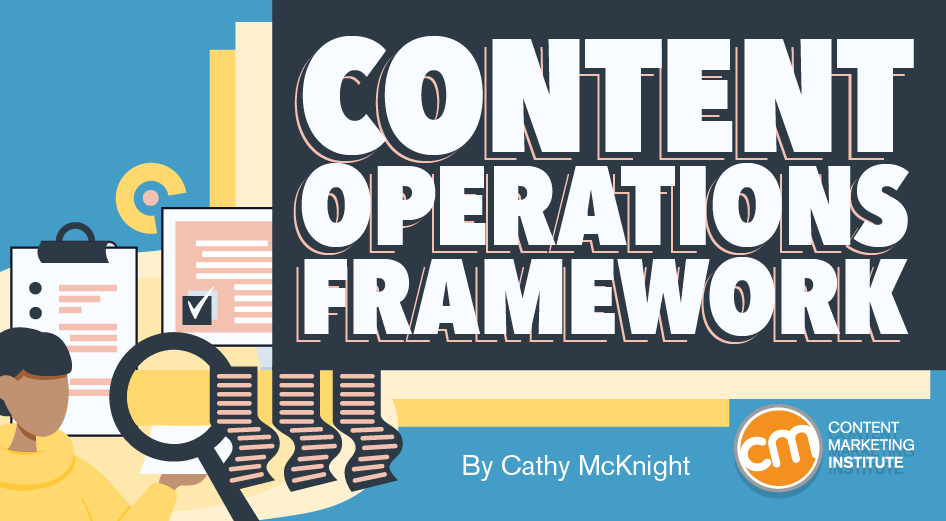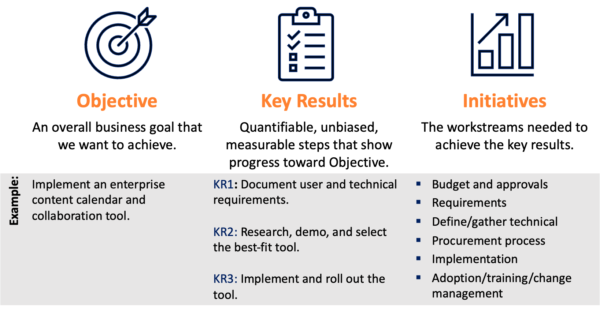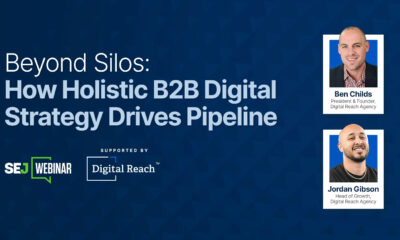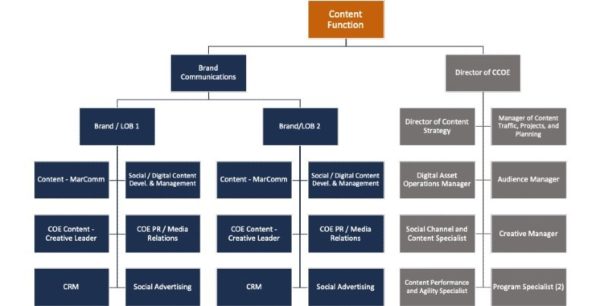MARKETING
Content Operations Framework: How To Build One

More and more marketers of all ilk – inbound, outbound, social, digital, content, brand – are asked to add content operations to their list of responsibilities.
You must get your arms around:
- Who is involved (and, I mean, every who) in content creation
- How content is created
- What content is created by whom
- Where content is conceived, created, and stored
- When and how long it takes for content to happen
- Why content is created (the driving forces behind content creation)
- What kinds of content does the audience want
- How to build a framework to bring order and structure to all of this
The evolving expectations mean content marketers can no longer focus only on the output of their efforts. They must now also consider, construct, implement, and administer the framework for content operations within their organizations.
#Content marketers can no longer focus solely on the output. It’s time to add content ops to the mix, says @CathyMcKnight via @CMIContent. Click To Tweet
What exactly are content operations?
Content operations are the big-picture view of everything content-related within your organization, from strategy to creation, governance to effectiveness measurement, and ideation to content management. All too frequently at the companies – large and small – we consult with at The Content Advisory, content operations are left to evolve/happen in an organic fashion.
Teams say formal content operations aren’t necessary because “things are working just fine.”
Translation: Nobody wants the task of getting everyone aligned. No one wants to deal with multiple teams’ rationale for why the way they do things is the right/best/only way to do it. So, content teams just go on saying everything is fine.
News flash – it’s not.
It’s not just about who does what when with content.
Done right, content operations enable efficacy and efficiency of processes, people, technologies, and cost. Content ops are essential for strategic planning, creation, management, and analysis for all content types across all channels (paid, earned, owned) and across the enterprise from ideation to archive.
A formal, documented, enforced content operation framework powers and empowers a brand’s ability to deliver the best possible customer experiences throughout the audiences’ journeys.
A documented, enforced #ContentOperations framework powers a brand’s ability to deliver the best possible experiences, says @CathyMcKnight via @CMIContent. Click To Tweet
It doesn’t have to be as daunting as it sounds.
What holds many content, administrative, and marketing teams back from embracing a formal content operations strategy and framework is one of the biggest, most challenging questions for anything new: “Where do we start?”
Here’s some help in high-level, easy-to-follow steps.
1. Articulate the purpose of content
Purpose is why the team does what it does. It’s the raison d’etre and inspiration for everything that follows. In terms of content, it drives all content efforts and should be the first question asked every time content is created or updated. Think of it as the guiding star for all content efforts.
In Start With Why, author Simon Sinek says it succinctly: “All organizations start with WHY, but only the great ones keep their WHY clear year after year.”
All organizations start with WHY, but only the great ones keep their WHY clear year after year, says @SimonSinek via @CathyMcKnight and @CMIContent. Click To Tweet
2. Define the content mission
Once the purpose of the teams’ content efforts is clear (and approved), it’s time to define your content mission. Is your content’s mission to attract recruits? Build brand advocacy? Deepen relationships with customers? Do you have buy-in from the organization, particularly the C-suite? This is not about identifying what assets will be created.
Can you talk about your mission with clarity? Have you created a unique voice or value proposition? Does it align with or directly support a higher, corporate-level objective and/or message? Hint: It should.
Answering all those questions solidifies your content mission.
ADVERTISEMENT
The marketer’s field manual to content operations
A hands-on primer for marketers to upgrade their content production process – by completing a self-audit and following our step-by-step best practices. Get the e-book.
3. Set and monitor a few core objectives and key results
Once your content mission is in place, it is time to set out how to determine success.
Content assets are called assets for a reason; they possess real value and contribute to the profitability of your business. Accordingly, you need to measure their efficacy. One of the best ways is to set OKRs – objectives and key results. OKRs are an effective goal-setting and leadership tool for communicating objectives and milestones to achieve them.
OKRs typically identify the objective – an overall business goal to achieve – and three to five key quantifiable, objective, measurable outcomes. Finally, establish checkpoints to ensure the ultimate objective is reached.
Let’s say you set an objective to implement an enterprise content calendar and collaboration tool. Key results to track might include:
- Documenting user and technical requirements
- Researching, demonstrating, and selecting a tool
- Implementing and rolling out the tool.
You would keep tabs on elements/initiatives, such as securing budget and approvals, defining requirements, working through procurement, and so on.

One more thing: Make sure OKRs are verifiable by defining the source and metric that will provide the quantifiable, measurable result.
Make sure objectives and key results are verifiable by defining source and metric, says @CathyMcKnight via @CMIContent. Click To Tweet
4. Organize your content operations team
With the OKRs set, you need people to get the work done. What does the structure look like? Who reports to whom?
Will you use a centralized command-and-control approach, a decentralized but-supported structure, or something in between? The team structure and organization must work within the construct and culture of the larger organization.
Here’s a sample organizational chart we at TCA developed for a Fortune 50 firm. At the top is the content function before it diverges into two paths – one for brand communications and one for a content center of excellence.
Under brand communications is each brand or line of business followed by these jointly connected teams: content – marcom, social/digital content development and management, center of excellence content – creative leader, center of excellence PR/media relations, customer relationship management, and social advertising.
Under the content center of excellence is the director of content strategy, manager of content traffic, projects, and planning, digital asset operations manager, audience manager, social channel and content specialist, creative manager, content performance and agility specialist, and program specialist.
5. Formalize a governance model
No matter how the operational framework is built, you need a governance model. Governance ensures your content operations follow agreed-upon goals, objectives, and standards.
Get a senior-management advocate – ideally someone from the C-suite – to preside over setting up your governance structure. That’s the only way to get recognition and budget.
To stay connected to the organization and its content needs, you should have an editorial advisory group – also called an editorial board, content committee, or keeper of the content keys. This group should include representatives from all the functional groups in the business that use the content as well as those intricately involved in delivering the content. The group should provide input and oversight and act as touchpoints to the rest of the organization.
Pointing to Simon Sinek again for wisdom here: “Passion alone can’t cut it. For passion to survive, it needs structure. A why without how has little probability of success.”
6. Create efficient processes and workflows
Adherence to the governance model requires a line of sight into all content processes.
How is content generated from start to finish? You may find 27 ways of doing it today. Ideally, your goal would be to have the majority (70% or more) of your content – infographic, advertisement, speech for the CEO, etc. – created the same or in a similar way.
You may need to do some leg work to understand how many ways content is created and published today, including:
- Who is involved (internal and external resources)
- How progress is tracked
- Who the doers and approvers are
- What happens to the content after it’s completed
Once documented, you can streamline and align these processes into a core workflow, with allowances for outlier and ad-hoc content needs and requests.
This example of a simple approval process for social content (developed for a global, multi-brand CPG company) includes three tiers. The first tier covers the process for a social content request. Tier two shows the process for producing and scheduling the content, and tier three shows the storage and success measurement for that content:
7. Deploy the best-fit technology stack
How many tools are you using? Many organizations grow through acquisitions, so they inherit duplicate or overlapping functionality within their content stacks. There might be two or three content management systems (CMS) and several marketing automation platforms.
Do a technology audit, eliminate redundancies, and simplify where possible. Use the inherent capabilities within the content stack to automate where you can. For example, if you run a campaign on the first Monday of every month, deploy technology to automate that process.
The technology to support your content operations framework doesn’t have to be fancy. An Excel spreadsheet is an acceptable starting place and can be one of your most important tools.
The goal is to simplify how content happens. What that looks like can vary greatly between organizations or even between teams within an organization.
Adopting a robust content operations framework requires cultural, technological, and organizational changes. It requires sponsorship from the very top of the organization and adherence to corporate goals at all levels of the organization.
None of it is easy – but the payoff is more than worth it.
Updated from a November 2021 post.
HANDPICKED RELATED CONTENT:
Cover image by Joseph Kalinowski/Content Marketing Institute
MARKETING
Elevating Women in SEO for a More Inclusive Industry

Know your value
It’s essential for women to recognize their worth and advocate for themselves in the workplace. It’s important to know your value and not be afraid to own it.
For a lot of women, myself included, doing this can feel horribly unnatural. It’s often hard to admit that you’re good at things or that you have big ambitions because of how society treats us. I, for example, often struggle with writing my own bio or answering questions about my career path and successes. I even struggled while writing this article in many ways, describing my personal experiences and opening myself up.
It’s easy to underestimate our value and downplay our contributions, but it’s essential to recognize the unique skills, talents, and perspectives that we bring to the table. So, take a moment to reflect on your achievements, expertise, and strengths. Don’t be afraid to speak up and advocate for yourself in meetings, negotiations, and performance reviews. While it may sound daunting, there are actionable steps you can take to get started.
Track your achievements and, as much as possible, quantify the impact. Document projects you’ve worked on, results you’ve achieved, and positive feedback or recognition you’ve received from colleagues or supervisors. Use data and metrics to demonstrate the value you bring to the table. And when the time comes to discuss salary and benefits, you will be prepared with everything you need to ask for what you deserve. Try writing a script and reading it aloud to prepare yourself. It may feel silly, but it works.
More tactically, do your research. Find salary benchmarks from places like Glassdoor or LinkedIn. Use Fishbowl to find people talking candidly about salary ranges for roles similar to yours. There are multiple “Bowls” dedicated to salary, compensation, and negotiations. You may just find people comparing notes on salary from your company.
Remember, you deserve to be recognized and rewarded for your hard work.
For those in leadership positions, we can advocate for more transparency around salary and compensation. That doesn’t have to mean that an entire company has access to everyone’s personal income, but it could mean that, as a company, you share salary ranges for different positions based on experience. It could mean that you clearly define the factors that go into determining salary or a raise and how these factors are weighted. Every company is different, but the goal should be to foster a culture of transparency and accountability.
Overcoming imposter syndrome
Overcoming imposter syndrome and self-doubt is key to promoting yourself and establishing a strong professional identity. It’s natural to experience moments of insecurity and self-doubt. It’s natural to have a sense of not belonging. I know I have certainly experienced it. But just because you feel impostor syndrome or you’re not sure you can do something doesn’t mean you shouldn’t try. Don’t disqualify yourself.
In my experience, men more often specialize in technical SEO than women, which can cause a lot of women to doubt themselves around the more technical side of things. Data from Lidia’s article on the gender divide in topics illustrates this very well. Last year, men wrote the overwhelming majority of content on technical SEO and AI. In contrast, women tended to author more of the “soft” topics. This could be related to women in our industry feeling like they can’t or shouldn’t author content on certain technical topics.
But it’s essential not to let imposter syndrome hold you back from reaching your full potential. So, next time you feel a sense of not belonging, remind yourself of your accomplishments, resilience, and unwavering determination. And remember, you are not alone — many successful women have faced imposter syndrome and overcome it, and so can you.
Make your own credentials
In today’s competitive world, it’s not enough to rely on others to recognize your talents and achievements — you need to take control of your own narrative and actively promote yourself.
You don’t have to write a dissertation to be considered an expert. You also don’t have to share a brand new idea or point of view to be considered a thought leader. The key is to find inefficiencies and unique perspectives — whether about the industry as a whole or specific to SEO specialties or verticals — and be vocal about it.
Leverage social media and your personal or company website as a platform to express your opinions and share your ideas. Join SEO communities like Sisters in SEO on Facebook or Women in Tech SEO on Slack. These are your peers who will not only happily support your thought leadership efforts but also serve as a sounding board and support system for you. Seek out speaking opportunities and podcast guest appearances. Submit your work and yourself for awards. Don’t be afraid to put yourself out there and showcase what you bring to the table.
I created my own website a few years back to showcase my expertise. With options like WordPress and Wix, it’s easier than ever to get a site up and running. It’s also relatively inexpensive to maintain. Today, I use it as a portfolio that showcases all of my accomplishments, from publications to speaking engagements.
Just remember — innovation is great, but it’s not a requirement. A new perspective on something old can be just as valuable as a shiny new idea.
Depth over breadth
Not everybody has to be (or can be) an expert on all things SEO. But you can become an expert on a very specific topic or aspect of SEO. You can also work to become the local expert within your company, city/region, or even a particular vertical. The goal is to be the go-to person about a certain topic or facet of the industry. Maybe you want to be the voice of local SEO like Darren or the data scientist like Annie. Use that angle to start small and master your niche.
Building your own credentials isn’t magic. It just feels that way when it works.
Creating a clear and impactful online presence that reflects what you do and what you stand for will allow you to stand out as a true thought leader. Strong personal branding also provides an opportunity for women in SEO to gain valuable support by connecting with other female leaders. The more value you can provide, the stronger your credentials will be, and the wider your reach can grow.
MARKETING
A Recap of Everything Marketers & Advertisers Need to Know

When rumors started swirling about Twitter changing its name to X, I couldn’t believe it at first. But then, in July 2023, as I searched for my favorite blue icon on the phone, I found a black icon instead. It had actually happened!
MARKETING
The key to correcting the C-suite trust deficit

Take a moment to search “CMO tenure” and you’ll find a wide variety of content discussing the short tenure of CMOs and how it’s among the shortest of roles in the C-suite. If you dive deeper, you’ll find that CEOs don’t seem to trust CMOs.
Boathouse’s CMO Insights study (registration required) noted several sobering conclusions:
- 34% of CEOs have great confidence in their CMOs.
- 32% of CEOs trust their CMOs.
- 56% of CEOs believe their CMO supports their long-term vision.
- And only 10% of CEOs believe their CMO puts the CEO’s needs before their own.
If these statistics also apply to the CMO’s entire organization, then it’s clear we have a trust problem with marketing leadership.
If you haven’t read Patrick Lencioni’s “The Five Dysfunctions of a Team,” I consider it required reading for anyone in any leadership role. In his book, Lencioni builds a pyramid of dysfunctions that need to be addressed for a team to succeed. The foundational dysfunction — with which one cannot build a successful team — is “absence of trust.” We see it at scale with marketing organizations today.
Introducing objectivity through data
In “Hamlet,” Shakespeare writes, “There is nothing either good or bad, but thinking makes it so.” Each organization that makes up a company looks at the company from a different perspective. What marketing sees as positive, finance may see as negative. But who’s right? No one.
Usually, there is no objectivity because leadership comes up with an idea and we execute it. It’s like the fashion proverb “Beauty is in the eye of the beholder.” Unfortunately, we’re going to struggle to run a profitable organization if it’s run like a fashion show.
Therefore, we need to introduce objectivity to how we work. Leadership needs to come together to agree on goals that align with the goals of the broader organization. One element of this conversation should be an acknowledgment that this is turning a ship.
Often leaders — especially those without marketing backgrounds — are likely to expect instant gratification. It’s going to take time to turn the ship and you and your team would do well to set reasonable expectations right away.
Dig deeper: KPIs that connect: 5 metrics for marketing, sales and product alignment
Aligning goals and metrics across the organization
With goals in hand, we need to assign metrics to their progress and agree on the source(s) of truth. Once these objective measures are in place, perspective doesn’t matter. 2 + 2 = 4 regardless of whether you’re in HR or accounting.
Every public road has a speed limit and whether you’re in compliance with it has nothing to do with your perspective. If you’re above it, you’re wrong and subject to penalties. Referring to the fashion example, it’s not a fashion show where some people like a dress and others don’t.
By using data to objectively measure marketing’s progress within the organization and having the rest of the leadership buy into the strategy, we build trust through objectivity. Maybe the CEO would not have chosen the campaign the marketing team chose.
But if it was agreed that a >1 ROAS is how we measure a successful campaign, it can’t be argued that the campaign was unsuccessful if the ROAS was >1. In this example, the campaign was an objective success even if the CEO’s subjective opinion was negative.
Data-driven campaign planning
Within the marketing organization, campaigns should always be developed with measurement top of mind. Through analysis, we can determine what channels, creative, audiences and tactics will be most successful for a given campaign.
Being able to tell the leadership team that campaigns are chosen based on their ability to deliver measured results across metrics aligned to cross-departmental goals is a powerful message. It further builds trust and confidence that marketing isn’t run based on the CMO’s subjective opinions or gut decisions. Rather, it’s a collaborative, data-driven process.
For this to be successful, though, it can’t just be for show, where we make a gut decision and direct an analyst to go find data to back up our approach. This would be analytics theater, which is a perversion of the data. Instead, tell the analyst what you think you want to do and ask them to assess it.
For the rest of the organization’s leadership, ask questions when the marketing team presents a campaign. Find out how they came up with the strategy and expect to hear a lot about data — especially the metrics you all agreed would support the company’s overarching goals.
Dig deeper: 5 failure points of a marketing measurement plan — and how to fix them
Data literacy: Building credibility through transparency
Building trust doesn’t happen overnight, but a sustained practice of using data to drive marketing leadership’s decisions will build trust if the metrics ladder up to the organizational goals and all of leadership is bought into the measurement plan.
Over time, this trust will translate into longer tenure and more successful teams through building the infrastructure needed to tackle Lencioni’s five dysfunctions.
Opinions expressed in this article are those of the guest author and not necessarily MarTech. Staff authors are listed here.
-

 SEO7 days ago
SEO7 days agoHow To Drive Pipeline With A Silo-Free Strategy
-

 PPC7 days ago
PPC7 days ago26 Ready-to-Go AI Prompts for Social Media
-

 MARKETING6 days ago
MARKETING6 days agoGenerative Engine Optimization Framework Introduced in New Research
-

 MARKETING5 days ago
MARKETING5 days agoLet’s Start Treating Content More Like We Treat Code
-
SEARCHENGINES4 days ago
Daily Search Forum Recap: May 3, 2024
-

 MARKETING4 days ago
MARKETING4 days agoHow Tagging Strategies Transform Marketing Campaigns
-

 MARKETING4 days ago
MARKETING4 days agoTinuiti Recognized in Forrester Report for Media Management Excellence
-

 WORDPRESS7 days ago
WORDPRESS7 days ago20 Best WooCommerce Extensions for Your WordPress Shop

















You must be logged in to post a comment Login